PDF chapter test TRY NOW
Sexually transmitted diseases can be caused by pathogen such as virus, bacteria or parasites. These diseases are transmitted through the sexual contact from one person to another person. Sometimes sexually transmitted infections can be transmitted non sexually also.
Non sexual ways of transmission includes:
- From mother to child during pregnancy or breastfeeding
- Through blood transfusions
- Shared needles
Important!
Sexually transmitted diseases (STD) cannot be transmitted through any of the physical contact.
STD is also called sexually transmitted infection (STI) or venereal disease (VD).
In this subtopic, we will learn about the following diseases in detail
a. Gonorrhoea
a. Gonorrhoea
b. Syphilis
c. Hepatitis -B
d. AIDS
d. AIDS
STDs by bacteria
1. Gonorrhoea
Mode of transmission: Sexual contact
Tissue/Organ affected: Urethra is affected
Symptoms: Discharge from genital openings, pain during urination.
Treatment: Gonorrhoea infection can be treated and cured with antibiotics such as ceftriaxone which is given in the form of an injection and azithromycin via oral.
Treatment: Gonorrhoea infection can be treated and cured with antibiotics such as ceftriaxone which is given in the form of an injection and azithromycin via oral.

Gonorrhea infection
2. Syphilis
Causative organism: Treponema pallidum
Mode of transmission: Sexual contact
Tissue/Organ affected: Minute abrasion on the skin or mucosa, of the genital area.
Tissue/Organ affected: Minute abrasion on the skin or mucosa, of the genital area.
Symptoms:
- Ulceration on genitals
- Skin eruption
Treatment: Syphilis can be treated and cured with antibiotics such as penicillin, doxycycline, azithromycin and ceftriaxone.
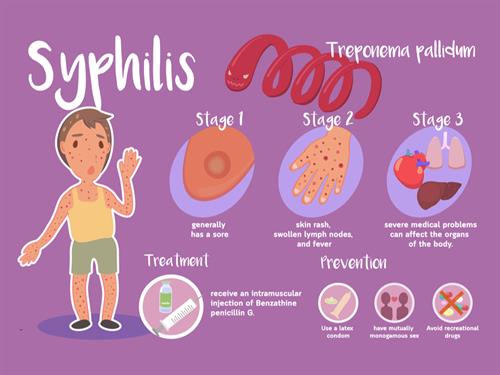
Syphilis
STDs by virus:
1. Hepatitis -B or Serum Hepatitis
Hepatitis B is a disease which creates serious liver infection caused by entero virus. This virus causes acute inflammation of liver by damaging liver cells.
Important!
Enteroviruses are nothing but are most commonly spread through infected person’s secretions such as saliva, sputum, faeces, sweat, tears, breast milk and blood.
Causative Organism: Hepatitis B virus
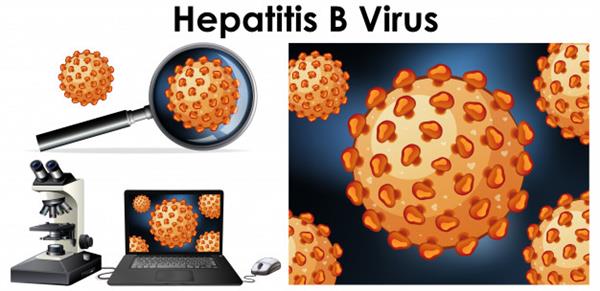
Mode of transmission:
- Through infected mother to their babies
- Through sexual contact
- Through contact with infected person’s secretions such as saliva, sweat, tears, breast milk and blood.
Symptoms:
- Fever
- Loss of appetite
- Nausea and vomiting
- Yellowness of eyes and skin
- Light coloured stools
- Itching of skin
- Headache and joint pain
- Hepatitis B also causes Liver cirrhosis, a condition when there is a severe scarring of liver resulting in its poor functioning. This type of condition generally occurs at the late stages of a chronic liver disease.
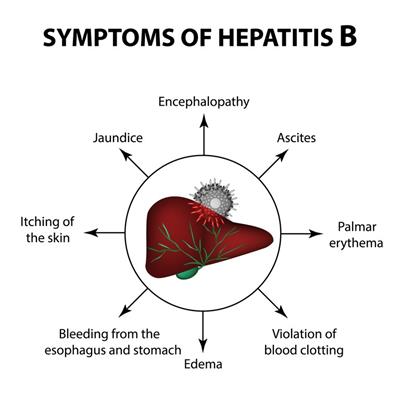
Symptoms of Hepatitis B
Prevention and Control:
- Screening of blood donors before blood donation can prevent the transmission.
- Injection of drugs to be prevented.
- Having safe and protected sex.
- Sharing of razors should be avoided
- The vaccine of hepatitis B (HepB) provides excellent protection against HBV (Hepatitis -B virus). The vaccine is safe and highly effective.
2. Acquired Immunodeficiency Syndrome (AIDS)
Important!
Acquired Immunodeficiency Syndrome is a disease (AIDS) caused by the pathogen HIV (Human Immunodeficiency Virus). It is a retrovirus and was first recognised in Haiti (USA) in 1981. In India, the first confirmed evidence of AIDS infection was reported in April 1986 from Tamilnadu. There are many vaccination trials conducted across the world to prevent the AIDS. The most prominent one is the RV 144 vaccine trial which shows 30% reduced HIV risk. This trial was conducted in Thailand in 2003, and reports were presented in 2011.
Causative organism: AIDS is caused by a retrovirus (RNA virus) known as Human Immunodeficiency Virus (HIV).
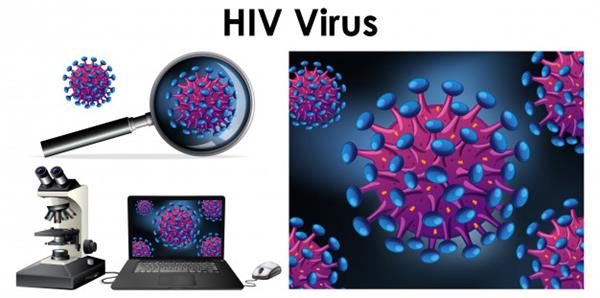
Mode of transmission: It is transmitted through,
- A sexual contact (from infected person to a healthy person)
- Blood contact (transfusion of unscreened blood)
- By surgical equipments (infected needles and syringes)
- Maternal-foetal transmission (from infected mother to the foetus via ).
Tissues/Organs affected: In our human body, the immune system plays a vital role in fighting against the infections. HIV virus mainly attacks the white blood cells or lymphocytes (T-lymphocytes), acting as the body's immune system or self-defence mechanism. Over time, HIV weakens the body's immune system, so it has a tough time-fighting diseases.
Symptoms:
Some of the important symptoms are,
Some of the important symptoms are,
- Weight loss
- Prolonged fever
- Sweating at night
- Chronic diarrhoea
Prevention and Control:
- Disposable syringes and needles should be used.
- Protected and safe sexual contact.
- Screening of blood before blood transfusion.
- Avoid sharing shaving blades/razors.
- People should be educated about AIDS transmission.
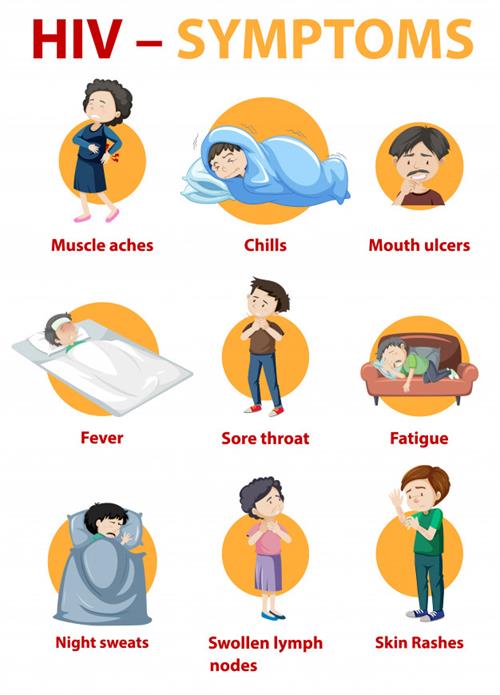
Important!
Robert Gallo at National Institute of Health, USA and Luc Montagnier at Pasteur Institute, Paris in 1983 isolated the HIV which causes AIDS.
Reference:
https://www.freepik.com/free-vector/symptoms-hiv-infection-infographic_9819310.htm#page=1&query=hiv&position=21
https://www.freepik.com/free-vector/close-up-isolated-object-virus-hepatitis-b_5183598.htm#page=1&query=hepatitis%20b&position=19
https://www.freepik.com/free-vector/hiv-virus-computer-screen-magnifying-glass_5936241.htm#page=1&query=hiv%20virus&position=31
